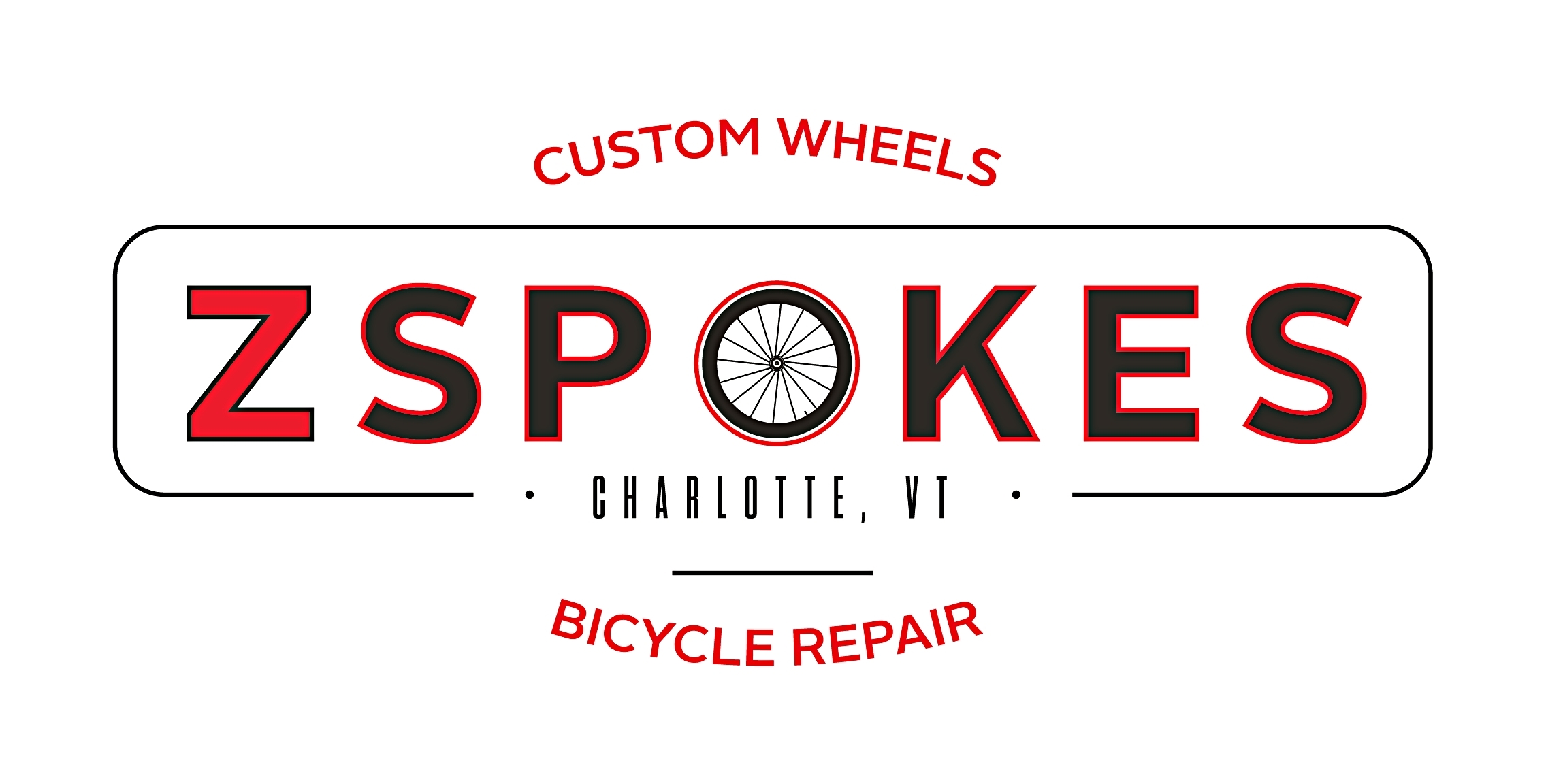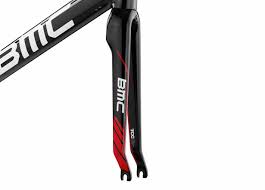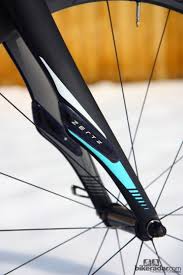WHY CARBON?
and not Aluminum?
People are often curious why I stick with mostly Carbon for my refurbished bikes, especially mountain bikes. The truth is, the first few years of carbon use in the bike industry kind of gave it a reputation as being fragile and have a limited life span. However, over the years, as the bike engineers began to get more familiar with its’ traits and as production technology advanced, Carbon very quickly became the material of choice. We have gotten to the point with aluminum bikes where they have become the bikes with a finite life span. I have seen far too many aluminum bikes crack on welds, curves, shock mounts, head tubes and seat tubes to have any trust in a used aluminum bike. These failures that I am specifically referring to, are all caused by normal riding or JRA in bike shop speak (Just Riding Along). So why would I want to stand behind a heavier (most of the time), flexier (in the case of full suspension) bike that I know it’s just a matter of time before it breaks? I don’t. Meanwhile, there are specific brands and types of carbon that I know are rarely, if ever, going to break or crack from fatigue, there are no welds to crack, shock mounts are integrated and well supported, tubing angles and shapes are integrated and not separate pieces joined together. Where the aluminum fatigue cracks are a certainty, carbon cracking from JRA is not, or is at such a longer use interval so as to make bikes viable for much, much longer. Unfortunately, this does not apply uniformly in the bike industry, and if you trace it deep enough and talk to the right people it comes back to the factory producing the product. Some factories do it much better than others. Using my extensive experience, there are bikes and brands I trust and stand behind and others that you will not find me offering, even if some of them offer an excellent suspension design or ride quality.
Speaking of ride quality, let’s talk about it, starting with road bikes...
With regards to road bikes, modern carbon road bikes are able to be tuned to a much finer degree based on carbon type (high modulus vs low modulus), carbon thickness, tube shape and tube diameter. Different bikes are tuned and designed with different goals in mind. An absolute race or crit bike will have a ultra rigid BB and drivetrain coupled with a large down tube .
and often a shaped top tube for ultimate torsional stiffness and handling. This is great for the aforementioned racers, but also larger riders or riders who really like the punchy feel of every pedal stroke driving forward. On the other end of the spectrum are bikes like the famous Specialized Roubaix which are tuned with comfort as the primary goal. That Roubaix was one of the first in the industry to be designed with comfort in mind, but at this point most brands have a “comfort” or “endurance” bike in their lineups. They usually incorporate very thin seat stays, often these seat stays which are tuned to flex for comfort, will also have inserts to absorb road vibration as well.
Often times you will see the same tactics reflected in the fork as well, however they need to be careful here as too much flex introduced in the fork can have an greater adverse effect on handling.
Coupling this with a more relaxed geometry of shorter top tubes and longer head tubes allowed for a more upright and generally more comfortable position, especially for riders who are doing long of hours of relatively low intensity riding. While this style of bike is very popular with the non-competitive century riders and disease event riders, it is not without it's negative characteristics as well. As a general rule, the tall head tube and flexier frame, along with what is usually a longer wheelbase (which can aid high speed stability) are all detrimental to handling on descents and corners as well as aerodynamics. There has been a bit of a recent resurgence in titanium and steel frames as people are realizing the extra comfort and smooth ride available in those materials. The major downsides of both of those are drivetrain stiffness, torsional rigidity and weight. The bike industry as a whole is getting better and better at filling the gaps between those extremes I just listed, carbon bikes with excellent drivetrain stiffness and decently smooth ride quality, Ti bikes with large diameter chainstays and BB interfaces for better power transfer. Ultimately, you will have a better cycling experience if you are honest with yourself about what kind of riding you are going to be doing and where your priorities are, and then choosing a bike from there.
Mountain bike ride quality.
First of all, I believe that a mountain bike used primarily for actual mountain biking should be a full suspension bike. Period. Any and every form of vehicle that goes on uneven and rough terrain has suspension.
Except...the 29er hardtail has it’s place as a jack of all trades, if you like to hit the dirt roads and prefer the security of a mountain bike over cyclocross or gravel grinder. Want to have one bike and do a bit of trail riding and a bit of casual off roading. Or just really can’t spend the money required to get into a decent full suspension bike (I’m trying to help with the excellent refurbished bikes). It also has a place if you are a hardcore racer with a quiver of bikes and have an ultra light hardtail as a short track sprinting machine or for those races and aren’t really mountain biking.
If you enjoy mountain biking, you will generally have more fun, less fatigue, more control and ultimately a larger margin of error, on a properly setup full suspension bike, so that’s where I’ll focus from here.
Most suspension design has evolved both with regards to pivots, links and axles as well as frame material. Over the years, most of the poor designs have also been culled from the herd, or at least refined and band-aided with shock technology. The design goals of a full suspension mountain bike differs quite a lot from those of a road bike, in that ultimate stiffness connecting all the pivot locations is absolutely paramount. The comfort and ride quality come from the front and rear shocks doing their job and the more rigid the connection of those points, the better the bike rides. When riding the exact same suspension bike in aluminum and carbon, back to back, there are two things that are instantly clear. First, the torsional rigidity through the top and down tubes of the carbon bike ties the front and rear of the bike together so much better. The bike wants to hold a line through rough terrain and bermed/high speed corners which lets the shocks absorb the bumps instead of flexing and deflecting off line. The second, very noticeable thing, is the weight. 1 ½ to 2 pounds of frame weight is significant, the argument that you can skip a cheeseburger and save 2 pounds off yourself just doesn’t hold weight...ahem. Keep in mind that you are accelerating the bike with every pedal stroke and changing your body weight by such a small percentage does little to nothing to change how it feels. On the other hand, think about how 2 lbs is around 8% of the weight your legs are trying to move with each pedal stroke. A nice 4-6” travel mountain bike with an efficient suspension design, weighing in the 25-27lb range is basically like cheating compared to what was on offer 5-8 years ago. It’s light enough to ride all day, climbs better than an old XC bike and descends better than an old DH bike, but there is one down side. As the bikes have made these advancements the price curve has gotten steep, very steep. Not long ago $5000 was more than enough to get yourself an absolute top of the line XTR equipped bike, then in just a few short years that price range was an SLX/XT mix (or SRAM equivalent, which by the way, 12spd Eagle at the GX and NX level is very poor, better off sticking with higher end 11spd at that point.) and often, not even the nice version of shock dampers are available.
This is where Zspokes refurbished bikes come in, I firmly believe that you will have a far better riding experience on a high end and very nice, pre-loved bike with quality parts and with proper suspension setup, than you ever would on a similarly priced mid-low level new bike.
But what about crashing and warranty?
I hear you asking and so let's go through that eventuality, and here is where we come to the visions that people have of their carbon bike shattering to pieces under them while they are happily riding down the trail. I’m happy to tell you that with high quality modern carbon, it just doesn’t happen. When that 50 pound rock comes hurtling down from the sky and drops on your top tube, yes, your bike will break. When TSA stacks 50 hard sided suitcases on top of it in the belly of the plane, yep probably going to break. So if you like to travel with your bike or know chicken little, maybe Titanium is the frame choice for you. The majority of broken carbon mountain bikes I’ve seen have been the result of slow speed tip overs. For example you are climbing a steep technical climb and stall or slip out, can’t unclip in time and tip over. The reason this is generally a more damaging crash, is that you have all your body weight bearing down on a mostly motionless bike and it can’t deflect away from whatever is under it. So how about warranty? Guess what, if you did that and your chainstay hit a sharp rock and cracked, even if this was your first ride on a brand new bike you just paid $9000 for, it’s still not a warranty. Nope, warranties from all brands are to cover manufacturing defects which tend to show up in the first few hundred miles of use, things that shouldn’t have made it through QC at the factory but somehow did. Every bike company I know of would look at the damage, see signs of an external impact and say “oh well, too bad, we’ll offer you a crash replacement rear triangle.” Most of the time those same companies will sell you a crash replacement rear triangle or if it’s obsolete then sell you a discounted frame. Generally speaking a crash replacement front or rear triangle is in the $500-$700 range, not cheap but also not the price of a new bike. I can hear all the doubters saying to themselves “that’s why I want to stick with an aluminum bike, it will just dent and I can keep on riding”. Let me refer you to my previous experiences detailed above, aluminum will crack from fatigue even without any dents, if you don’t notice the small crack, it can then fail quite catastrophically. Case in point, here is a video published by Pink Bike a while ago showing the same model bikes in both frame materials tested to failure as well as a more crude impact test. Many will have seen this, but I think everybody who considers themselves a serious mountain biker should take a few minutes and watch this video. I was lucky enough to be able to go into the test lab at Santa Cruz and do similar “swing for the fence” impact testing with a carbon frame. That’s all very impressive, but I think that the most telling part of that series of tests is the head tube pressure to failure test, as it’s a very good example of the immense strength that well manufactured carbon has.
I also find it rather comforting to see and hear all the warning sounds and signs it gives while braking and then the ultimate failure mode is not particularly catastrophic. So what is the takeaway from all this? I’m confident in my experiences with carbon and in the bikes I select, to offer a one year warranty on the bikes I refurbish and sell against non crash related failures. There’s no denying that mountain biking is hard on equipment and let’s face it, shit happens on the trail sometimes that you just can’t control. With that in mind I choose to offer and stand behind brands that I know to have excellent carbon, with nice riding and efficient suspension designs.





